A topic I’ve only hinted at is what I’ll call “pulp-hero backup series.” Many of the character-pulp/pulp-hero magazines, such as The Shadow, Doc Savage, The Spider, etc., not only contained a novel-length story about the title character, but also included other pulp-hero series. Only a few of those have so far been reprinted, and I’m not fully aware of what these series are. Of course, many of these may just not be worth reprinting.
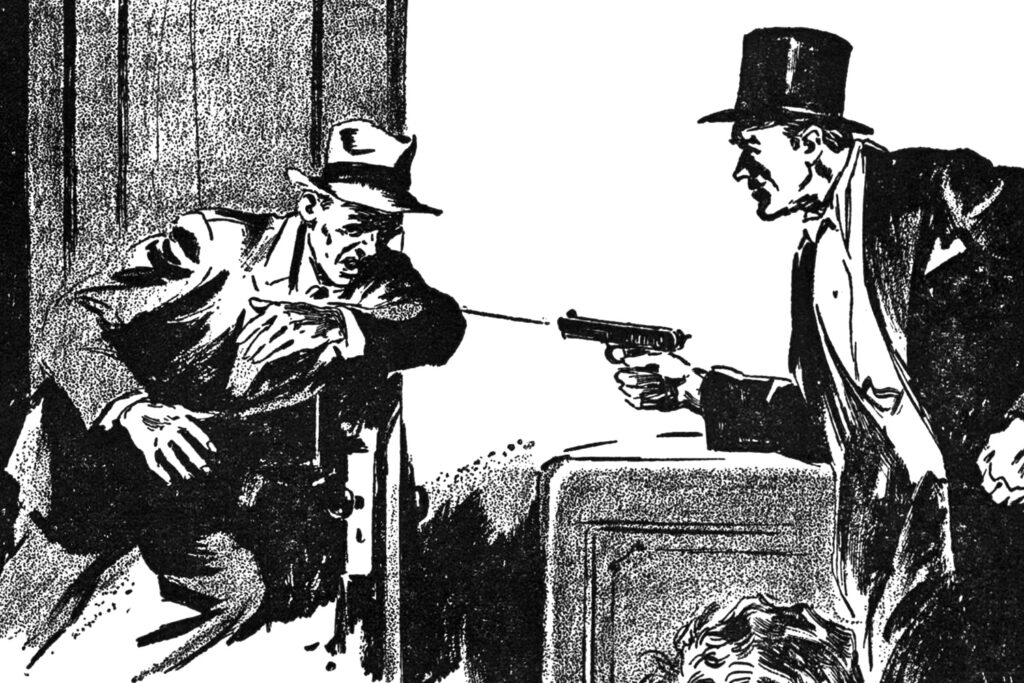
So in an attempt to at least start a discussion on these characters, I decided to put this posting together. If any of you have more info on these characters or of ones I missed, please let me know in the comments. I don’t think I’ve ever seen detailed articles on these series in any fanzine.
We’ll organize these by publisher. I’m only considering the “character pulps,” those where the name of the pulp is the pulp hero (or villain). I am ignoring one-off characters, as well as those who only appeared in the character pulp for one issue (I found a few that had several stories in anthology pulps, but appeared once in a hero pulps).
Street & Smith pulps
The Shadow
In looking at The Shadow, I was surprised by how many backup series I found, and most didn’t last very long. I have never heard of these authors and they seem to be largely unknowns. Most lasted only two stories, so I guess they didn’t catch on. We get: Dick Palette, only two stories (July/September and October 1931) by Hector Gavin Grey; Joe Diamond, also only two stories (January and April 1932) by Richard Hobart; Sam Mace, four stories (June to November 1932) by T.W. Ford; Jimmy Buchanan, two stories (July and October 1932) by Frank Cockrell; Jimmy Blaine, two stories (September and October 1932) by Dabney Horton; A.B. “Alphabet” Crisp, three stories (September 1932 to June 1933) by F.A.M. Webster; John “Four-Minute” Frane, two stories (November 1932 and July 1936) by Hamilton Craigie; Terry Lanahan, two stories (November and December 1932) by William Henry Cook; Francis X. O’Banion, two stories (November 1932 and September 1933) by Edward Friend; Jeremiah Grady, two stories (December 1932 and January 1933) by Charles M. Stuart; and Timothy O’Rourke, two stories (November 1933 and March 1935) by Jay J. Kalez.
Then we finally get some stories by some better-known authors. Mart Rooney, three stories (April 1933 to April 1937) by Laurence Donovan, who also did some of The Phantom Detective and The Whisperer stories. After an appearance in Nick Carter, Bill Trask appeared in two more stories (July 1935 and January 1936) by Denslow M. Dade. Samuel Deering, four stories (December 1935 to July 1937) by Frank Gruber. He later did the T.T. Todd series here (three stories September 1938 to April 1939) and the Jim Strong series (20 stories) in Street & Smith’s Crime Busters. Barney Penney, two stories (December 1937 to May 1939), and Johnny Lannigan, two stories (October 1941 to February 1942) both by William G. Bogart, best known for his Doc Savage work. J. Wilson Bunce, two stories (September to October 1946) by Ted Stratton.
Mark Curtis strangely just appeared in two stories (March and May 1933) by Norvell W. Page, who was best known for The Spider. This is one of his first series characters.
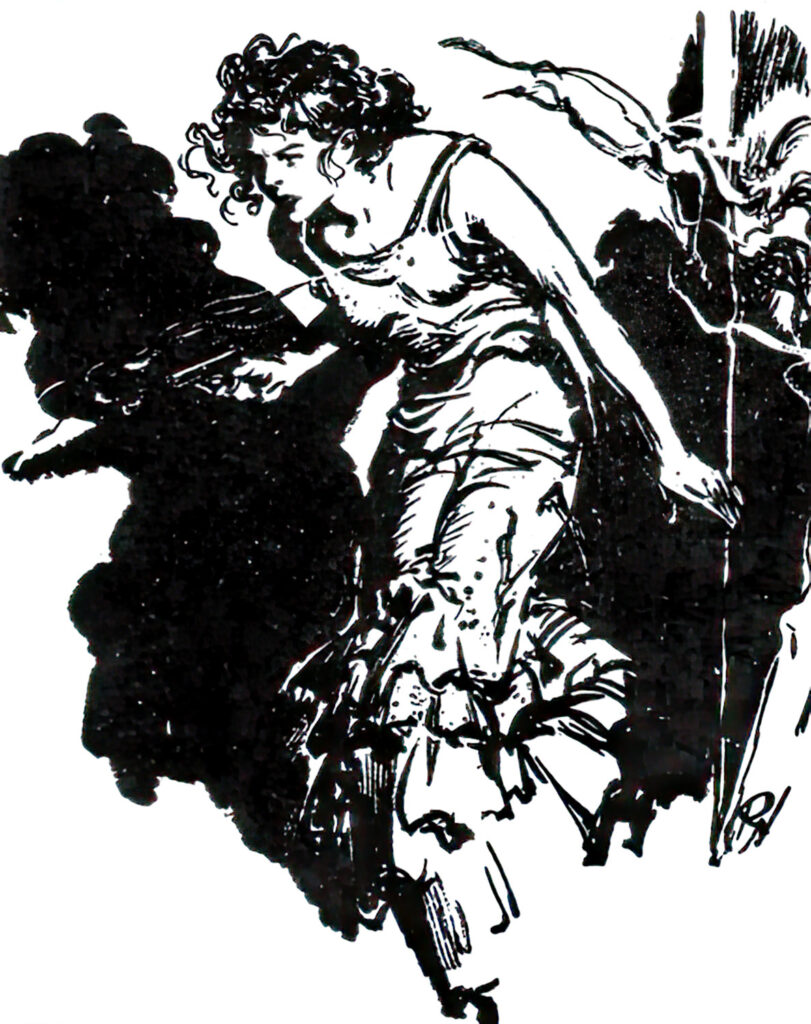
Then we finally get a longer series, Grace “Redsie” Culver by Jean Francis Webb under the Roswell Brown pseudonym, which lasted 20 stories from August 1934 to July 1937. This one might be worth reprinting as it’s a rare female pulp detective series. Then the really long series of Steve Fisher’s Sheridan Doome, who is a naval investigator. He is a WWI vet, horribly scarred and his stories are sherlockian mysteries. His series ran about 55 stories from May 1935 to July 1943. Before these Fisher wrote two hardcover Sheridan Doome novels which have since been reprinted by Age of Aces. Hook McGuire, 19 stories set in bowling alleys (December 1936 to April 1942) by Edwin Vernon Burkholder under the George Allan Moffatt pseudonym. Pat Hazeltine, seven stories (March 1939 to October 1940) by Leo Stalnaker. Gene Stone, eight stories (April 1944 to November 1946) by Stanley C. Vickers.
Danny “The Kid” Garrett was a series character done by two authors. Steve Fisher started off doing 38 stories from July 1936 to October 1939. Then William Bogart, under the house name Grant Lane, did a further 27 stories from November 1939 to March 1946, though the last handful appeared in other pulps. That’s 65 stories.
After losing his own pulp, The Whisperer moved to the back of The Shadow for 25 stories (December 1937 to May 1940). First written by Laurence Donovan, Alan Hathaway soon took over. They both appeared under the Clifford Goodrich house name. Also, after losing his own pulp, we get a trio of Nick Carter stories (June to October 1944) by Bruce Elliott. Elliott is probably best known for the really bad Shadow stories toward the end of the run.
Doc Savage
After what I saw with The Shadow, I guess I shouldn’t have been too surprised to see some of the same in Doc Savage with stuff like Sgt. Byng, two stories (December 1933 and May 1936) by Hal Field Leslie; John Royce, three stories (April 1935 to January 1936 ) by two authors, Bruce Harley (one story) and Avin H. Johnston (two); Pinkney P. Penthoven, two stories (November and December 1943) by Conrad G. Feige; Slimuel X. Evans, two stories (August and September 1944) by Thomson Burtis; Benton Walters, two stories (December 1946 and Jan 1947) by John D. MacDonald. Yes, that John D. MacDonald.
Thankfully we soon get Duke Grant, 12 stories (August 1936 to September 1939) by Harold A. Davis, better known as a Lester Dent ghost and doing The Skipper. And The Skipper, after losing his pulp moved to Doc Savage for a very long run, nearly 40 stories from November 1937 to December 1943 by four authors under the Wallace Brooker house name: Laurence Donovan, Harold A. Davis, Norman Daniels, and William Bogart. Also coming from The Skipper after five stories is the Deacon, Swede, and Jellybean series by Kenneth MacNichol for four more stories March 1938 to June 1940. Another refugee is Bill Barnes after the demise of his pulp for 21 stories (October 1939 to October 1943) by Charles Spain Verral, George L. Eaton, and Harold P. Montanye.
We also got the Julian Renard and Roger Bannister series, eight stories (June 1945 to Sept/October 1947) by Thornton T. Shively under the name Thorne Lee.
Nick Carter
We get Constable Oake, four stories (April 1933 to July 1934) by George Fielding Eliot, a fairly active pulp author. I noted the character Bill Trask appeared once before moving to The Shadow for two more appearances. Terry “Bulldog” Black, two stories (February and May 1936) by Theodore Tinsley, which was also running in The Whisperer, with another in Crime Busters. Tinsley wrote several Shadow novels, among others.
One aspect that may have limited having other series was that in Nick Carter they soon were running two Nick Carter stories, usually the main novella plus an additional short story.
The Skipper
With The Skipper, I had noted the five stories of the Deacon, Swede and Jellybean series by Kenneth MacNichol (December 1936 to November 1937) before moving to Doc Savage. And that was it.
The Whisperer
With The Whisperer, I had noted Terry “Bulldog” Black, here getting seven stories (October 1936 to December 1937) by Theodore A. Tinsley; Dick Larkin, two stories (March and June 1937) by Alan Hathway; Jim Strong, four stories (July to December 1937) by Frank Gruber, which also appeared in Crime Busters.
The Avenger
I actually didn’t expect any backup series, but we did get Jerry Kane, two stories (November 1940 and May 1941) by Schuyler Garratt Edsall writing as Gary Barton.
The Wizard
I also didn’t expect any backup series, but we did get Hyman Goldfarb, two stories (June and August 1941) by Ross Russell.
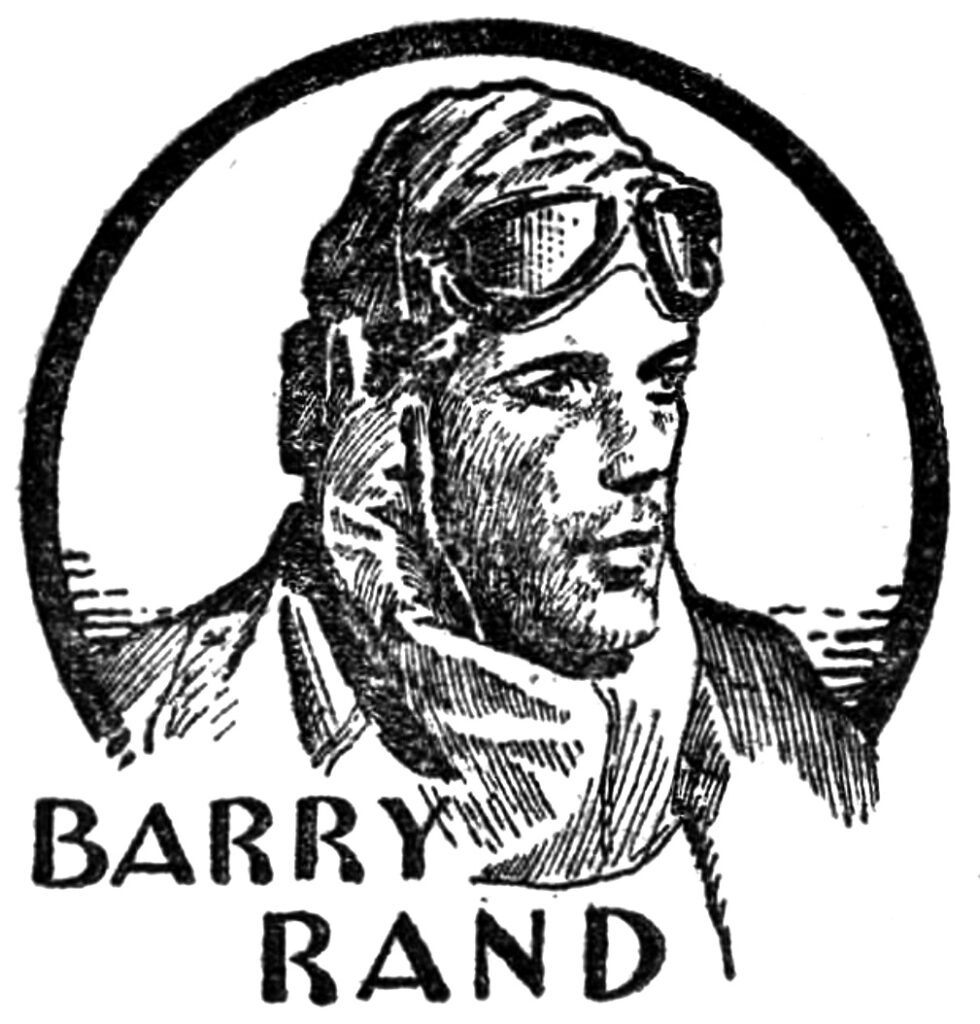
Popular Publications pulps
G-8 and His Battle Aces
We start off with Bill Kennedy (Sky Wolf), three stories (February 1934 to June 1934) by Harold Cruickshank after having appeared in nine stories in the previous Battle Aces. Robert Hogan himself contributed the Greaseball Joe series that ran almost 60 stories (December 1936 to June 1944) and later brought back his Red Falcon for another 15 stories (March 1939 to June 1944) and Smoke Wade for another 16 stories (April 1939 to June 1944). This means most issues were fully written by Robert J. Hogan. Age of Aces has been reprinting both Red Falcon and Smoke Wade, but I have no idea if they’ll do these stories. It might be a while.
The Spider
We get the long Doc Turner series, 68 stories by Arthur Leo Zagat (April 1934 to December 1942) along with the long Ed Race (The Masked Marksman) series, 54 stories by Emile C. Tepperman (September 1934 to October 1943), best known for the “Purple War” series of Operator #5. Steeger Books is reprinting the Ed Race series. I’d love to see the Doc Turner ones as well. There is also Allan Foster, six stories (March to September 1935) by Wyatt Blassingame, who did a lot of work in the weird menace genre. Douglas March, four stories (November 1936 to August 1937) by Frank Gruber; Brother Henry, seven stories (April 1937 to March 1940) by A.H. Bittner under the name Wayne Rogers, another who did weird menace works; George Archer, three stories (September 1938 to July 1939) by Leon Byrne.
Operator #5
The well-known counter spy Red Finger, reprinted by Steeger Books, ran 12 stories (October 1934 to March/April 1938) by Arthur Leo Zagat. Also appearing in Operator #5 were: John Vedders, 11 stories (April 1935 to May/June 1937) by Frank Gruber; Gregory Grex, four stories (April 1936 to May/June 1937) by Charles Ingerman as by Evan Leigh; Sam Farrell, two stories (April and October/November 1936) Emile C. Tepperman; Big John and Shorty O’Neil, seven stories (July/August 1937 to November/December 1939) by Dale DeV. Kier.
Wu Fang/Dr. Yen Sin
Surprisingly, we get Mark Turner, three stories by Steve Fisher and Jud Stanton, two stories here and a final in Dr. Yen Sin by Frank Gruber.
Ace Publications
Secret Agent X
I did know about some series, but here we get Donald Faversham Manton, two stories (February and June 1935) by Emile C. Tepperman. There is also: Mark Hazzard, six stories (August 1935 to January 1936) by Frederick C. Davis, best known for The Moon Man, reprinted by Steeger Books; Ted Bosworth, two stories (January and February 1936) by James Perley Hughes; Ravenwood, five stories (March to October 1936) also by Frederick C. Davis, reprinted by Steeger Book, and spawned several new stories; Jason McGee, two stories (March and June 1936) by Norman A. Daniels; and Ex-Marine Kennedy, five stories (August 1937 to June 1938) by William Benton Johnston.
Thrilling pulps
The Phantom Detective
For such a long-running pulp, I expected more than just these short run series: Carla Stengl, two stories (June and July 1934) by Arthur J. Burks; Paul Morris, two stories (January and March 1937) by Lawrence G. Blochman; Gregory Malone, two stories here, but three elsewhere, by William Degenhard; Mugs Kelly, three stories here, but 20 elsewhere, by Donald Bayne Hobart; Det. Sgt. Nolan, two stories (October and December 1944) by Will F. Jenkins as by Murray Leinster; Patrick Edward McCreary, two here two elsewhere by Don Tracy as by Roger Fuller; and Stephen Carter, two here, one elsewhere by Amelia Reynolds Long.
The Masked Detective
I actually didn’t expect anything for this quarterly, but we got Dave de Priest, two stories (Summer and Fall 1941) by Jim O’Brien.
■ ■ ■
Overall I was kind of surprised by what I found. I knew of some backup series, but wasn’t aware of the extent of these or how long some of these ran.
Doc Turner had almost 70. Other high numbers included Danny “The Kid” Garrett at 65, Greaseball Joe at 60, Sheridan Doome at 55, and Ed Race at 54.
Very few of these series have been collected so far. While I’m not interested in all of these, several do sound interesting, especially those that lasted longer, or the ones by the various better-known pulp writers. Time will tell if we see them reprinted.

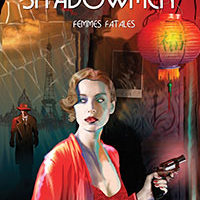

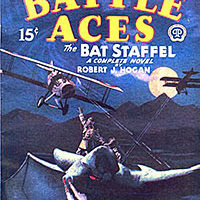
Nice run down. Thanks for doing that work.
Honestly, I’m surprised there weren’t more ongoing series. A podcast I’ve been listening to recently quoted a paperback writer as saying that series books were easier as you didn’t need to invent new characters and come up with their back stories, etc. Seems when speed writing was key in the days of the pulps, that might have been helpful.
Well, there were many other series that ran in other pulp magazines. My focus here was ONLY on backup series that ran in the character pulps. But there were many western, detective, adventure, and other series that ran in those magazines.